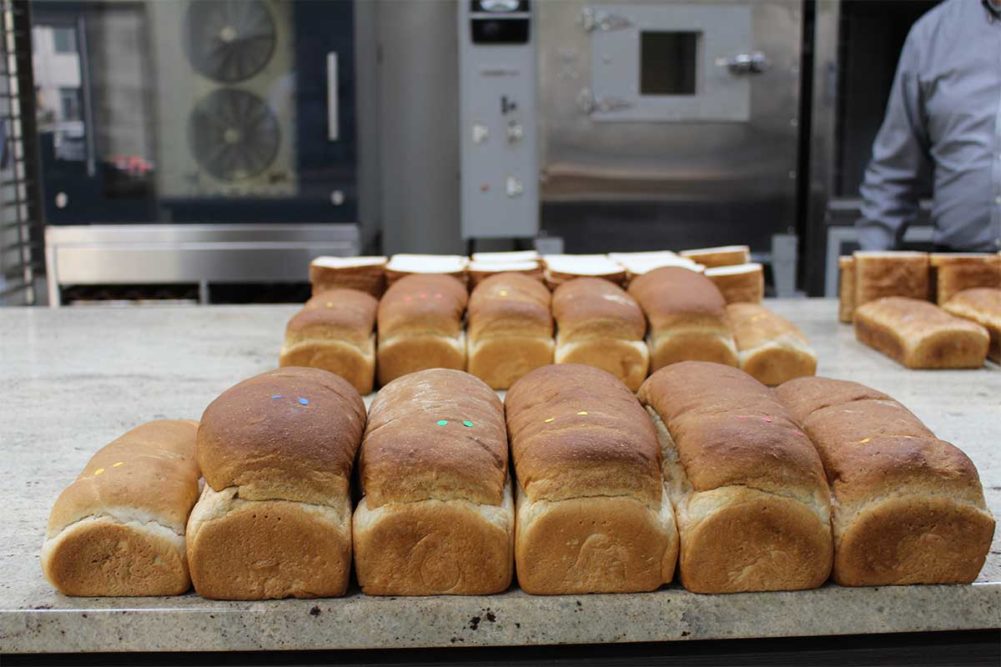When it comes to working with enzymes, less is definitely more. Even when working with one enzyme in a formulation, the room for error with overdosing or underdosing the ingredient is small.
“Depending on the enzyme, overdosing can cause severe processing problems from wet, sticky dough to dry, tight doughs,” said Sherill Cropper, PhD, new product development manager, Lesaffre Corp. “In addition, overdosing may have no functional impact, which would mean the formulator is wasting money on too much enzyme for the desired effect.”
Overdosing impacts volume, resilience, crumb structure and can even cause undesirable crust color.
“An overdosage of a freshness enzyme solution could result in product that is overly gummy or keyholing,” said Jesse Stinson, director, RD&A, Corbion. “An overdosage of a strengthening enzyme solution could cause loss of loaf volume or changes in dough handling properties.”
Kerry Taste & Nutrition uses its application dose effect analytical data to ensure its enzyme dosages are correct. Otherwise real issues of quality can occur.
“The use of non-starch polysaccharides (NSP) degrading enzymes ensures optimal dough handling and processability without acting on the starch content,” said Richie Pigott, vice president of business development, North American enzymes, Kerry. “However, NSP degrading enzyme overdosage can make dough very sticky, leading to higher water absorption and more waste.”
Typically, overdosing is easy to avoid as enzymes have recommended usage levels. Working within these ranges, bakers can find the optimal amount of enzymes for their formulation.
“Once you have optimized the usage level of the enzyme, you may not benefit from adding higher levels; sometimes less is more,” said Ashley Beech, senior application technologist, bakery enzymes, IFF Nutrition & Biosciences. “Many enzymes have a point of no return once you have reached overdose levels and substrate is no longer available.”
John Hinds, innovation center manager, Cain Foods, agreed that a little can go a long way. When working with enzymes, he suggested bakers make small incremental adjustments to avoid overdosing.
Bakers have a plethora of enzymes to improve multiple sides of their formulation all at once: anti-staling, gluten replacement, emulsification and oxidation, for example. However, blending enzymes to take full advantage of this wide range of functionality is where overdosing becomes a real issue, and the window for error shrinks.
“Depending on the company producing an enzyme blend, each batch could contain the same or similar enzymes. So if they are all used in the same product, various enzymes could be overdosed,” Mr. Boutte explained. “The bottom line is that each enzyme can only be used once at an optimal dose.”
To prevent overdosing while creating a synergistic enzyme solution, John Sawicki, director of R&D and quality control for BreadPartners, suggested bakers avoid maxing out the usage levels of the enzymes being used. Really lean into that less-is-more mentality while combining them with enzymes less sensitive to overdosing.
“When using enzymes that are capable of being overdosed, it is important to use them at usage levels, not at their maximum level, but at a lower level in combination with other enzymes that they may have synergies with,” he said. “Finding the right combination of old versus new with lower costs versus high will minimize overdosing problems and still be affordable.”
When developing enzyme blends, it’s also critical to remember that some enzymes are more sensitive to overdosing than others, Troy Boutte, vice president of innovation, AB Mauri North America, pointed out.
“Interestingly, fungal alpha amylase is practically immune to overdosing and can be added at 20 times the normal level and still make saleable bread,” he said. “However, certain phospholipases or bacterial alpha amylase may overdose with just 30% overage. And while not completely understood, certain flours are much more susceptible to overdosing than others. Ultimately, it’s important to try to develop an understanding of what you are purchasing, how it works and both optimal and upper limits.”
It’s not just understanding the ingredients in an enzyme batch or the optimal usage rate. Processing conditions, like heat, are what deactivate enzymes. If the dough is spending too much time resting on the floor, that’s additional time the enzyme has to work.
“Extra hours of the enzyme working on the dough gives the same effect as using too much enzyme; it’s an overdose based on the processing conditions,” said Christina Barsa, certified food scientist and technical sales representative, Enzyme Development Corp. “Formulators need to mimic the production procedure as closely as possible and realize that they will probably need to cut back on their enzyme dosage when they scale up.”





